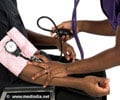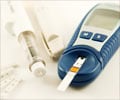Researchers have a health-care delivery model called patient-centered medical home (PCMH) that increased the percentage of diabetes patients who achieved goals that reduced sickness and death rates.

"This arrangement is unique," said Robert Gabbay, M.D., Ph.D., professor of medicine, Penn State College of Medicine and director, Penn State Hershey Diabetes and Obesity Institute. "It brings together multiple insurance payers convened by a state body without regulatory oversight to contract with a diverse range of practices across the state for broadscale implementation of better care leveraged by payment reform. This is one of the largest multi-payer PCMH programs in the country and can serve as a model for how to revitalize primary care and improve the health of patients across the country."
The researchers studied the use of PCMH with diabetes patients. They implemented the model for diabetes patients in 25 practices in southeast Pennsylvania encompassing metropolitan Philadelphia.
"Diabetes is one of the most costly of chronic diseases, accounting for $174 billion in medical care each year in the United States, with the cost of care for patients with diabetes averaging 2.3 times higher than similar patients without diabetes," Gabbay said. "Specifically for diabetes, only 7 percent of patients meet evidenced-based goals for the key predictors of morbidity and mortality: hemoglobin A1C, blood pressure, and LDL cholesterol.
"This model makes physicians look at their patient population in general, not just the individual. The focus has always been on the individual. That's great, but the twist here is to also look at the broad population. 'What percentage of my patients are getting their yearly eye exam, which we know can prevent blindness?' for example. Most practices wouldn't know that. Without measuring it, you can't work to improve it. If a low number of patients are getting an eye exam, do you maybe send out a letter to patients who need one to improve that?"
In PCMH, medical practices learn to work together as a team, coordinating care centered on the patients' needs. The researchers report a significant improvement in adherence to evidenced-based care guidelines and in clinical outcomes. In one year, the number of patients with better LDL levels, better blood pressure and or lower A1c levels increased. The number of patients receiving yearly foot exams, eye exams and pneumonia and influenza vaccines also increased.
Advertisement
The researchers published their findings in The Joint Commission Journal on Quality and Patient Safety. They will now expand their study across Pennsylvania.
Advertisement
Source-Eurekalert














